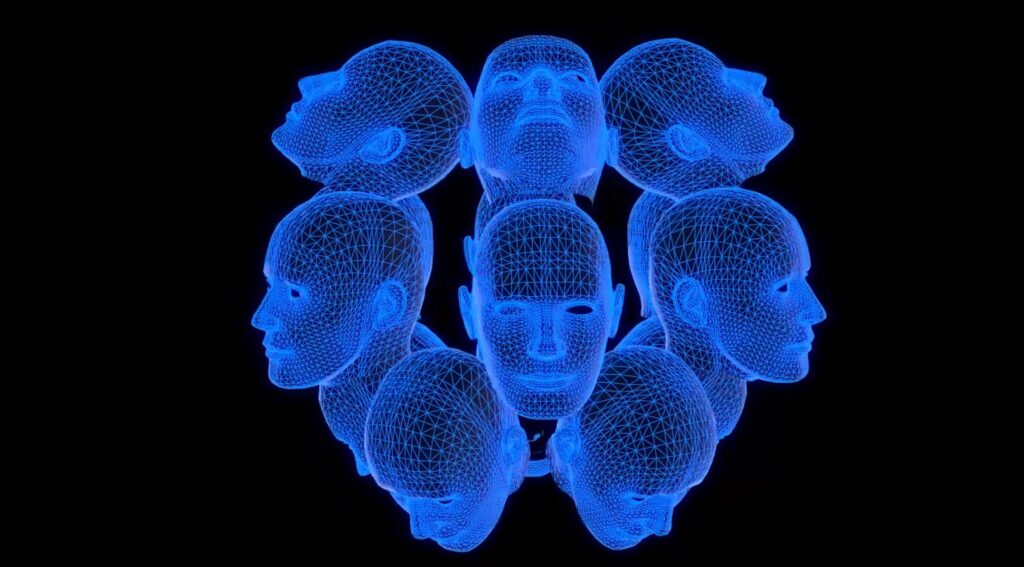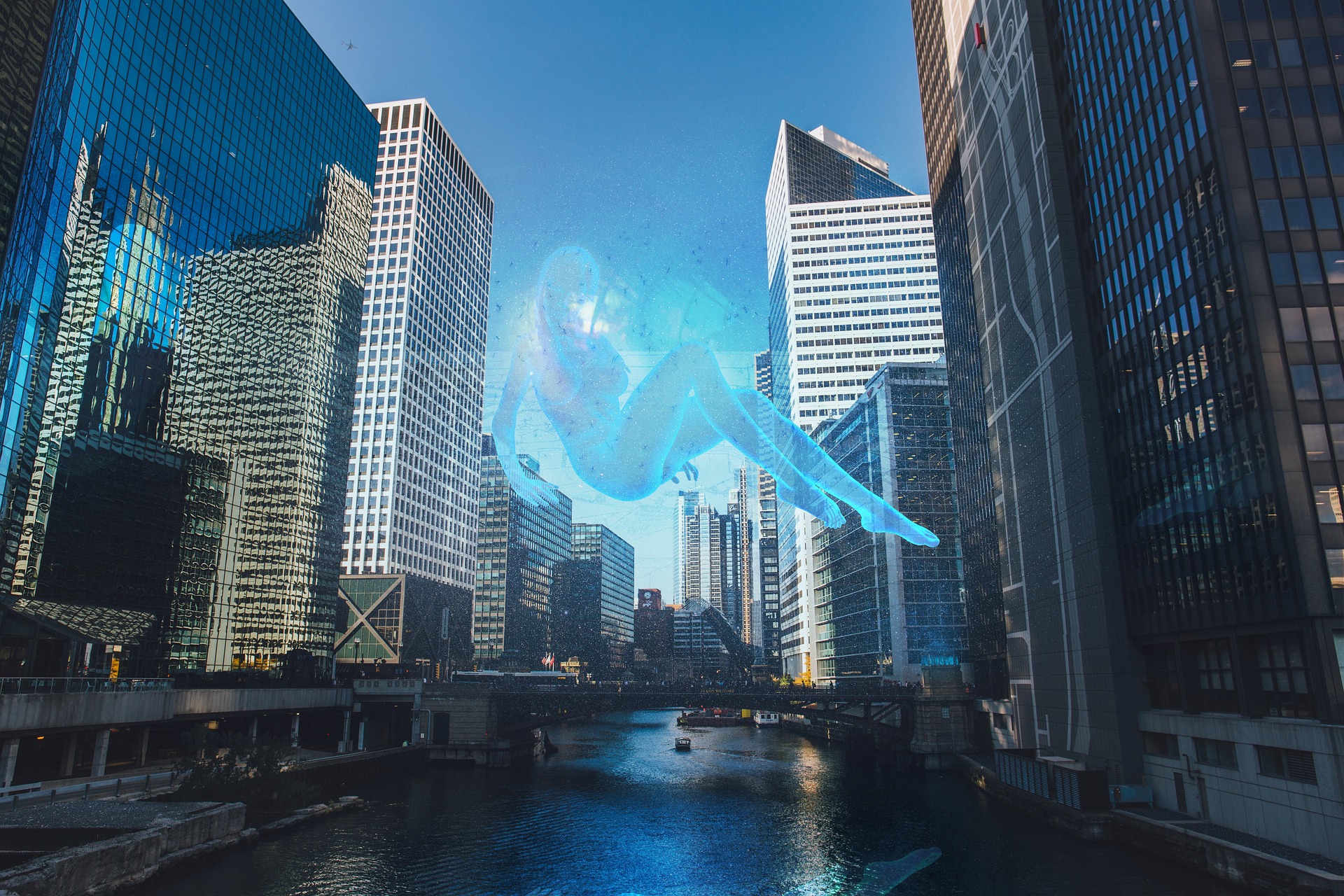If you've seen movies set in the future, you've probably seen someone using a 3D hologram.
From Star Wars to Avatar, these lifelike projections have appeared in our movies and TV shows, both as a dazzling display of technology and a powerful storytelling tool.
These images seem to float in the air and can be manipulated by touch. While this technology may still seem like science fiction to us, it is becoming a reality thanks to advances in 3D printing and holographic projection.
They can be used to create stunning visual effects or to provide more information in a presentation.
Although they may seem like something out of a fantasy world, 3D holograms are starting to become a reality.
Here we will look at some examples of their use and what the future holds for this exciting technology.
What is a hologram?
Etymologically, hologram means "entire writing".
In Greek, holos means "whole" and gramma "writing". By definition therefore, it designates a technique by which an image is inscribed in volume.
An hologram is a three-dimensional image created using laser light. Unlike a traditional photograph, it contains information about the light that has passed through the object, allowing it to be viewed from different angles.
Holograms are then images that appear to be three-dimensional but are actually a projection of light.

How to create a hologram?
A hologram is a three-dimensional image created using a laser and a photographic plate.
The process of making a hologram is actually quite simple. Using a separation glass, a laser is split into two beams. While one beam aims at the object to be holographed, the other aims at the photographic plate on which to inscribe the image of this object.
The object of which you want to create a hologram is placed in front of the laser.
Then, the laser is used to create an interference pattern on the photographic plate. It is this interference pattern that creates the three-dimensional image.
Finally, the plate is exposed to light, which completes the hologram.
The interference between the laser and the waves reflected by the object makes it possible to obtain the luminous amplitude of the object and therefore to register a relief image on the photographic plate.
It is therefore necessary to master two physical properties which are light coherence and light wave interference.
Note that this technique, although extremely complex, only allows one to create images in relief.
Different types of holograms
The scenic hologram on a human scale
To create this type of hologram, a window is placed on stage on which an image is projected. You need a good light intensity so that the reflection is of good quality and does not appear to be a reflection.
If many use glass as a projection support, this is not an obligation. You can also use tulle. Either a very thin fabric, so thin that it is not visible to the viewer's eyes but dense enough to capture the projected light.
Its great advantage is its maneuverability: lighter, it can be rolled up and transported easily.
The heart of the illusion lies in the depth that exists between the background of the scene and the hologram. On stage, we can quite imagine that real artists perform alongside the hologram. They will actually be behind the tulle or glass.
This was for example the case for rapper Snoop Dogg who was able to rap alongside Tupac's hologram in 2012:
The showcase hologram
The showcase hologram uses the same principle but in a reduced device. The technique is as follows: in a box, there is an inclined window onto which an animation is projected from above.
Such a device is therefore not made for the stage but for other types of events.
It is accessible and it requires nothing more than a base and content, it can be used for example to present a product in store, but not only.
The showcase hologram can also be used for an exhibition in a trade show to communicate on a concept, a presentation of a professional project to customers, a staging of an internal mascot in a company, entertainment in an amusement park, etc.
The pyramid hologram
The pyramid hologram has a difference in shape: It has several faces! By multiplying the windows, it makes sure to be observable from several angles.
It is therefore the ideal device to present a concept or a product. It is a type of hologram that catches the eye.
The fan hologram
The fan hologram technique undoubtedly represents the future of advertising displays
In the world of high-tech visual solutions, this technique makes it possible to project still or moving images that give the impression of floating in the air.
The fan blades will have LED bars. Thanks to the rotation speed of these light bars, the content appears as a video stream, giving the impression of a 3D image.
These uses are unlimited: cinemas, bars, special events, the launch of a product, or even a private party such as a wedding, a birthday, etc.
How holograms are used today?
Holograms are used in many fields, including security, medicine, entertainment, and politics.
In politics
Holograms have been used in many political events over the past few years. Prince Charles, Al Gore, President Erdogan, have all taken advantage of this technology for presentations at important meetings.
The Indian Prime Minister managed to organize 3500 presentations in 45 days, thanks to holograms. He just had to be in his office and hold his speech, while his hologram was present on several sites simultaneously.
Jean-Luc Mélenchon also benefited from hologram technology to carry out his major electoral meeting in 2017. He was thus present on two sites at the same time, in Paris where the hologram was projected, and in Lyon where he pronounced his speech.
The projection was transmitted by satellite in real time, which was a real innovation.
In entertainment and education
Holograms are becoming increasingly popular as a means of entertainment and education.
For example, many museums now use holograms to give visitors a realistic experience of historical events or works of art.
Holograms are also used in movies and video games to create realistic environments and characters.
One of the most famous examples of a hologram is the image of Princess Leia that appears in the movie Star Wars: Episode IV - A New Hope. In this scene, Leia records a message asking for help from Obi Wan Kenobi. When the hologram is played, it looks like she is standing in the room with the other characters.
As technology continues to develop, it's likely that holograms will become even more widespread and commonly used.
For security
Holograms are also used in security applications.
For example, many credit cards now contain holograms of images or logos. These holograms are only visible when the card is tilted at a certain angle, making it more difficult for criminals to fabricate fake cards.
In the field of medicine
In medicine, holograms are used for education and training purposes.
Doctors can use holograms to view 3D models of organs and perform delicate procedures without putting patients at risk.
For events
Finally, holograms are more widely used in large events. Moreover, at Neweb labs, we offer this hologram creation service!
Visitors to your event will be able to see holographic projections of historical figures or virtual representations of animals and other objects.
Holograms are quickly becoming a popular addition to events and conferences. And it's not hard to see why!
Holograms add an element of excitement and intrigue, and they can really wow your guests.
Additionally, holograms can be used in a variety of ways to enhance your event.
For example, you can use a hologram to create a virtual reality experience for your attendees or you can use a hologram as part of a presentation and keynote.
The possibilities are limitless ! If you're looking for a way to take your event to the next level, consider adding a hologram. Your guests will be impressed!
Holograms provide a unique and immersive experience that can be enjoyed by people of all ages.

